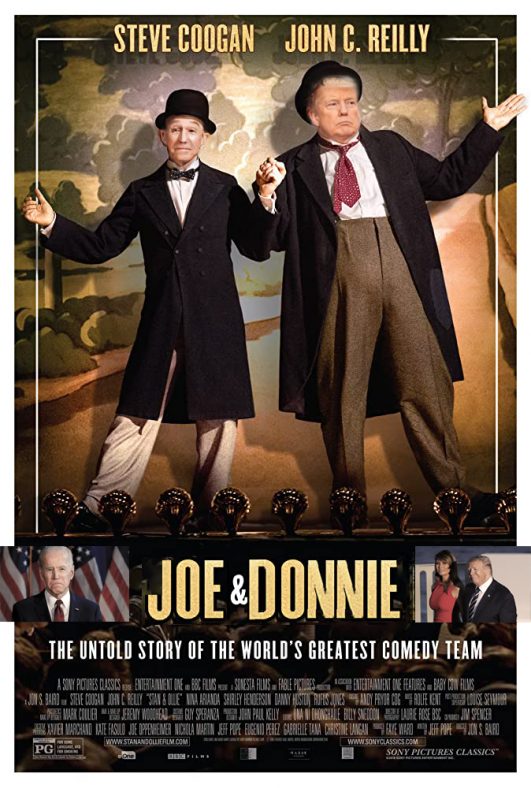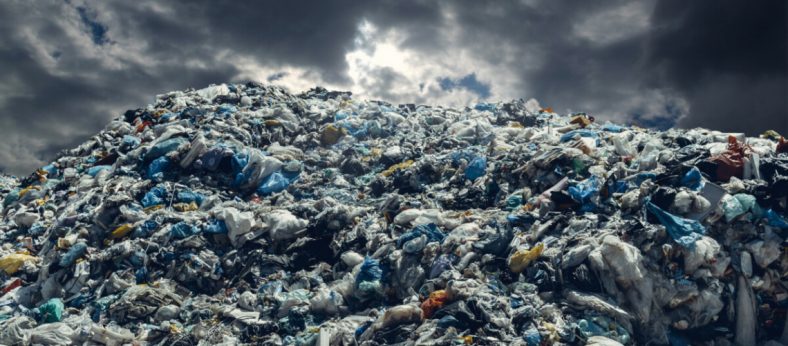The film ´The Gods must be crazy´ tells about San tribe living in Kalahari desert, away from industrial civilisation. One day, a glass Coca-Cola bottle is thrown out of an airplane by a pilot and falls to the ground unbroken. Initially, San people assume the bottle to be a gift from their gods, just as they believe plants and animals are, and find many uses for it. Unlike other bounties, however, there is only one glass bottle, which causes unforeseen conflict within the tribe. As a result, Xi, a member of the tribe, decides to make a pilgrimage to the edge of the world and dispose of the divisive object. (1)
The film criticizes the features of Western culture, the lack of community, and the culture of matter. While it ridicules Western culture through comedy, it raises us ethical as well as practical questions: how legitimate is it to take our own internet or culture to other cultural areas, what are the motives for cultural export and digitalization, and what are its implications?

- San
Bushmen
GLOBALIZATION
Globalization has accelerated since the 18th century thanks to advances in transportation and communications technology. Globalization is generally divided into three main areas: economic, cultural, and political globalization. Building the Internet in developing countries affects all three sectors. The Internet and mobile phones have been significant factors in globalization and have continued to create interdependence and economic and cultural activity around the globe. (2)
Globalization means taking on the positive sides of the world, but globalization is also sparking a debate about Westernisation. Democracy, fast food, and American pop culture can all be examples that are considered Western in the world. According to the publication “Theory of the Globe scrambled by Social network: a new Sphere of Influence 2.0” published by Jura Gentium (University of Florence), social media dominates the growing role in Westernization. A comparison to Eastern realities that decided to ban American social media (such as Iran and China with Facebook, Twitter) signifies a political will to avoid the Westernization of their own population and the way they communicate.
Globalization also involves challenges such as global warming, water and air pollution, overfishing and the unequal distribution of raw materials and resources, as well as the mindsets created by colonialist thinking.
In his book The Great Convergence: Asia, the West, and the Logic of One World, Kishore Mahbubani calls for national interests to be balanced with global interests and power to be shared. (3)
EQUALITY
The gender gap is global. In several European countries, two thirds of Internet users are men. In Brazil, men control the Internet with 75 percent of users, in China with 93 percent, and in Arab countries with 96 percent.
The linguistic and cultural gap is also significant. Although English is spoken by only six percent of the world’s population, 80 percent of websites are in English. Thus, for the majority of the world’s population, the majority of the Internet is completely inaccessible or only partially comprehensible. (4)
In some places, only the rich have access to the Internet in developing countries.
Illiteracy is one of the challenges. More than 75% of the world’s 781 million illiterate adults are found in South Asia, West Asia and sub-Saharan Africa, and women represent nearly two-thirds of all illiterate adults worldwide. Sub-Saharan Africa accounts for 64% of the illiterate (2015). (5)
Whether the spread of the internet will increase or eliminate inequality in society remains to be seen.

ECOLOGY
Data centers consume more than 400 terawatt hours of electricity globally, accounting for about two percent of the world’s energy consumption. Emissions are now at the same level as aviation, but by 2025, data center electricity consumption is predicted to double and emissions to be generated more than from aviation.
In addition to energy-efficient data centers, cleaning up digital waste also has an impact on data emissions. In the digital age, less paper may be generated, but even more useless bits are produced. Each of them has a carbon footprint. Files stored in cloud services accumulate the amount of data stored in data centers and increase the carbon footprint. One email with attachments can produce up to 50 grams of carbon dioxide. (6)
The ICT sector has an important role to play in enabling a more climate- and environment- friendly society. (7) It should be possible to build carbon-neutral data centers in developing countries. It is problematic in countries where environmental protection and governance are not even close to European standards.

DIGITAL COLONIALISM
Data centers are currently without a doubt one of the fastest growing industries in the world
Africa has a population of over 1 billion and is expected to grow by more than 2.5% annually, according to UN forecasts. A large portion of the population is young people who have grown up in the digital age but live in one of the least utilized areas of data centers and telecommunications companies in the world. The Asian continent is expected to be the largest data center market by 2021. (8)
Sociologist Michael Kwet (9) warns of the dangers of Silicon Valley’s plans for Africa – in a scenario he calls digital colonialism. According to Kwet, the problem is this: U.S. technology companies are working to control the digital ecosystem and thus the entire transfer of information to the continent. Within a short period of time, it changed into a technological system controlled by a handful of companies
The race to control Africa’s digital market is dominated by US tech giants: Amazon, Google and Facebook, as well as China’s Huawei. (10).
Facebook plans to install a submarine fiber optic cable around the entire African continent. The cable is three times the connectivity capacity of existing submarine cables serving the continent.(11)

DIGITAL DEVIDE
More than one and a half billion people do not have access to the internet, and at least 300 million of them live in Africa. (12)
Africa itself exhibits an inner digital divide, with most Internet activity and infrastructure concentrated in South Africa, Morocco, Egypt as well as smaller economies like Mauritius and Seychelles.
In 2000, Subsaharan Africa as a whole had fewer fixed telephone lines than Manhattan, and in 2006 Africa contributed to only 2% of the world’s overall telephone lines in the world. (13)
As a consequence of the scarce overall bandwidth provided by cable connections, a large section of Internet traffic in Africa goes through expensive satellite links. In general, thus, the cost of Internet access (and even more so Broadband access) is unaffordable by most of the population. According to the Kenyan ISPs association, high costs are also a consequence of the subjection of African ISPs to European ISPs and the lack of a clear international regulation of inter-ISP cost partition.The total bandwidth available to Africa was less than that available to Norway alone (49,000 Mbit / s).

- Internet users in 2015 as a percentage of a country’s population
Africa clearly shows as the largest single area behind the digital divide.Source: International Telecommunications Union
The International Telecommunication Union has held the first Connect the World meeting in Kigali, Rwanda (in October 2007) as a demonstration that the development of telecommunications in Africa is considered a key intermediate objective for the fulfillment of the Millennium Development Goals (14)
A new report calling for urgent action to close the internet access gap suggests that around $ 100 billion would be needed to achieve universal access to Broadband connectivity in Africa by 2030. This is a formidable challenge, as about a third of the population remains out of reach of mobile Broadband signal in Sub-Saharan Africa. The report estimates that nearly 250,000 new 4G base stations and at least 250,000 kilometers of new fiber across the region would be required to achieve the goal. (15)
Bill Gates has stated that the poor do not need computers but basic security such as food, water and health care. For the price of one computer, 2,000 children could be vaccinated against six killer diseases. If developing countries’ debts are not canceled, the G8’s actions will remain empty gestures,” commented Ann Pettifor on the decisions of last summer’s Okinawa meeting on the Jubilee 2000 campaign, under which the DOT Force working group leaves its proposals to leaders of rich countries in Genoa to close the digital divide. (16)

CULTURAL GAP
While there are many benefits to expanding the network, there are also problems to be solved on different continents, with infrastructure and quality standards at the forefront. However, the shortage of skilled labor and ignorance of the need for data center security solutions is expected to be a significant challenge.
The location of data centers on different continents and in different countries poses new challenges, as safety-related legislation and applicable building standards can differ significantly.
The conversion of existing buildings into functioning data centers is a particular trend in developing countries, which from a security perspective, this poses new challenges as well. (8)
OFF-LINE
Shutting down the Internet has been used as a policy instrument. Governments in Tanzania, Chad, Ethiopia and Uganda have used internet switch-offs and social media blackouts as a weapon against a rising opposition, to ensure they restrict the flow of information thereby getting re-elected against the will of voters. The Internet shutdown caused huge losses for example as businesses, government agencies, organizations and web-based operations such as banking, electronic file transfers, e-tax payments were disrupted.
From Caracas to Khartoum, Protesters are leveraging the internet to organize online and stand up for their rights offline. In response, in the past year governments in Bangladesh, the Democratic Republic of Congo, Egypt, India, Indonesia, Iran, Iraq, Sudan, Myanmar and Zimbabwe shut down the internet in all or some parts of their countries, perhaps with the hope that doing so would shut off their problems. Governments are increasingly using closures in crisis situations, claiming that they are necessary for public security or curbing the spread of misinformation.
When the internet is off, People’s ability to express themselves freely is limited, the economy suffers, journalists struggle to upload photos and videos documenting government overreach and abuse, students are cut off from their Lessons, taxes can’t be paid on time, and those needing health care cannot get consistent access.
Long internet shutdowns and social media blackouts between January 2020 and February 2021 have been termed “counterintuitive and a violation of human rights” in the digital age, according to social media giant Facebook’s East Africa spokesperson, Janet Kemboi. (17)

references:
(1) https://en.wikipedia.org/wiki/The_Gods_Must_Be_Crazy
(2) https://en.qaz.wiki/wiki/Globalization
(3) https://en.qaz.wiki/wiki/Westernization
(4) https://www.maailmankuvalehti.fi/2001/3/yleinen/digitaalinen-kuilu-kasvaa/
(5) https://en.wikipedia.org/wiki/List_count_to_literacy_by
(6) https://www.telia.fi/yritysille/artikkelit/artikkeli/datakeskukset-ovat-unohdettu-paastojen-lahde
(7) https://puheenvuoro.uusisuomi.fi/rikureinikka/173841-sivilisaation-evoluutio-a-history-of-the-world-in-our-time
(8) https://www.stanleysecurity.fi/siteassets/finland/meista/data-center/tulevaisuus-datakeskus-raportti.pdf
(9) Michael Kwet is a Visiting Fellow of the Information Society Project at Yale Law School. He is the author of Digital colonialism: US empire and the new imperialism in the Global South, and hosts the Tech Empire podcast. His work has been published at The New York Times, VICE News, Al Jazeera, Wired, BBC World News Radio, Mail & Guardian, Counterpunch, and other outlets. He received his PhD in Sociology from Rhodes University, South Africa.
(10) /https://www.dw.com/en/digital-colonialism-cheap-internet-access-for-africa-but-at-what-cost/a-48966770
(11) https://www.tivi.fi/uutiset/facebook-ymparoi-koko-afrikan-kuitukaapeli
(12) https://unric.org/fi/afrikkalaiset-maalaiskylaet-paeaesemaessae-internetis/
(13) https://en.wikipedia.org/wiki/Internet_in_Africa
(14) https://en.wikipedia.org/wiki/Internet_in_Africa
(15) // https://blogs.worldbank.org/digital-development/africas-connectivity-gap-can-map-tell-story
(16) /https://www.maailmankuvalehti.fi/2001/3/yleinen/digitaalinen-kuilu-kasvaa/
(17) /https://allafrica.com/view/group/main/main/id/00076816.html
PHOTO & ILLUSTRATION CREDITS
- https://en.wikipedia.org/wiki/San_people
- Nairobi Business Monthly
- http://echosante.info/environmental-protection-a-strong-regulatory-framework/
- https://bluetown.com/
- https://en.wikipedia.org/wiki/Internet_in_Africa
- Empower Africa
afrikka nettikaapeli : https://web.asn.com/en/
























